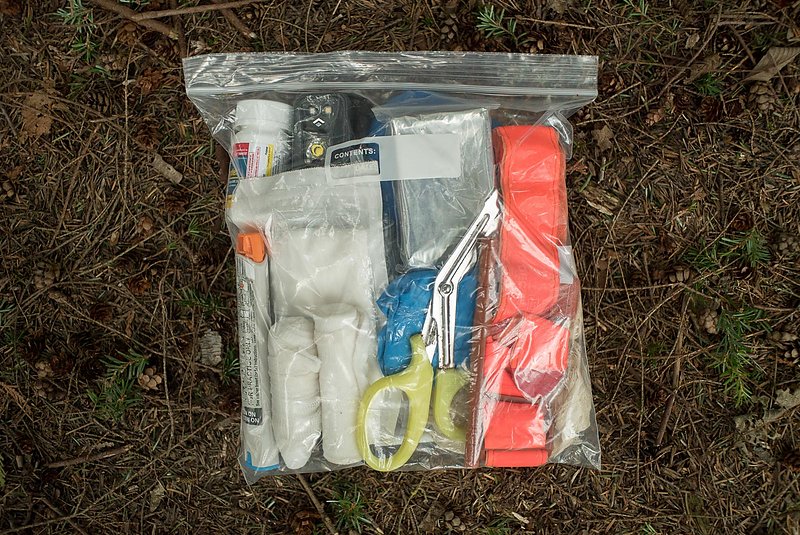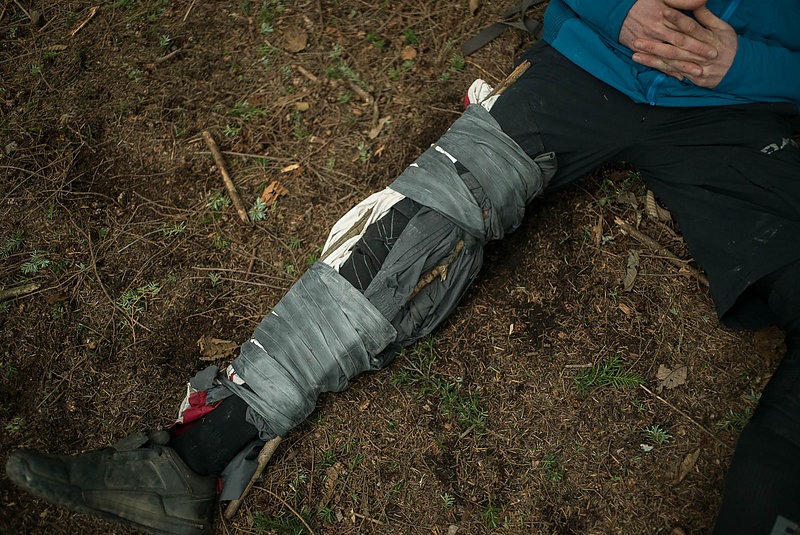
Mountain Bike First Aid Basics: Part 1 First Aid Kit Essentials
Words by Mike Wallace, MD | Photos by Jann Eberharter
Neglecting your emergency riding essentials is all too easy.
Chances are we’ve all gone riding regardless if there’s an extra tube or an energy bar in our pack, thinking our buddies will pick up the slack if things go wrong. Not only is this a great way to make things worse when something bad does happen, but it’s also the best way to earn the label of “that guy” and ensure you don’t get a text when all your buddies are heading out on a ride.
And in truth, packing the essentials, along with a few other items that can come in handy in a plethora of situations, is ridiculously easy. What to bring is very much dependent on what type of ride you are doing and how well you are trained. We’ll cover the five best items to carry for medical situations and a couple of ways to use standard bike items, like a tube, in an emergency.
Those familiar in the art of Wilderness Medicine might be able to MacGyver a tourniquet, create complex splints and slings, disinfect, build shelters, or more. For the other 98%, however, being a little bit prepared can go a long way. It is important to think about the terrain, weather, length of ride and distance from your fellow humans and rescue.
Setting yourself up for success always starts before the ride. Staying hydrated is the best way to prevent unwanted muscle cramps and fatigue—and yes, beer has water in it, but it’s not the same thing. If you’re trying to skimp on weight, water is not the thing to cut out. Chances are pretty high that your bonehead buddy will also be mooching off you all day.
After water, energy is essential; shoot for 200 calories per hour. Everybody has their own preferences on what they like to bring, from bars and gel packs to their left over breakfast burrito. With both hydration and food intake, it’s important to stay ahead, which means drinking before you get thirsty and eating before you’re lagging behind your bro’s from lack of energy.



THE ESSENTIAL KIT
There is always a balance between the weight and bulk of the kit you carry and efficiency and fun. Nobody wants to be tossed over the handlebars because their backpack weighs more than their bike. A hydration pack is probably the most common and sensical way to carry the essentials you need for any ride, no matter how long. A multi-tool, tube and spare bike parts, or enough for a repair, should definitely be integral to your kit, but here are five things that are light in weight but fully capable of saving your day:
1. Wound care dressings can get bulky, but they are light and can help you get the extra few miles you might need to get out. A few bandages and some gauze can help you from having to put a dirty t-shirt on a wound a risk making it even dirtier.
2. Duct tape or medical tape is probably all you need to protect and close up any wound until you get to definitive care.
3. A knife is an essential addition to any pack. Some multi-tools have them built in, but a small blade can come in handy in so many unpredictable situations.
4. Weighing nearly nothing and taking up equal the space, Zip Ties have an uncanny ability to save the day.
5. A Zip-Lock bag with Ibuprofen, Benadryl and iodine tablets always come in handy, whether it’s helping a hangover, making up for a lack of planning or mitigating pain.
If you’re heading out for a night ride or an overnighter, there are a couple extra essentials that can truly make a world of difference. One of the biggest problems in this environment is hypothermia, so throw in a mylar thermal blanket—they are cheap, light, small and come in incredibly handy if you get lost overnight or need to wait for evacuation. A head lamp can be the difference between a fun night out, and a long night out, a true lifesaver at the end of the day. Bring extra batteries if you plan to have to use it. Don’t forget a lighter and/or waterproof matches are also a great addition.



A spare tube can not only save you from walking out, but be used in multiple medical situations as a tourniquet, sling, or splint strap. Part 2 of the MTB First Aid Basics outlines orthopedic injuries and splinting.
You may want to consider keeping a larger kit in your car. Some of the items I keep and recommend:
SAM splints, ACE bandages, more duct or gaffers tape, more sterile bandages, sling, super glue, trauma shears, tweezers, clean knife or scalpel, exam gloves, extra clothing, hand sanitizer, medications: ibuprofen, benadryl, epi-pen, iodine tabs, extra food and water.
In addition to carrying these items, the best thing you can do is get trained. By no means does reading this article substitute for formal training; sign up for a Wilderness First Aid or Wilderness First Responder course so you’re ready when the unfortunate happens out there. Be safe, but more importantly, be prepared!
This column is brought to you by Backcountry Medical Guides, which offers mountain bike-specific First Aid and Wilderness First Responder classes in Bellingham, WA and Santa Cruz, CA. Check out class dates and availability at www.backcountrymedicalguides.org


